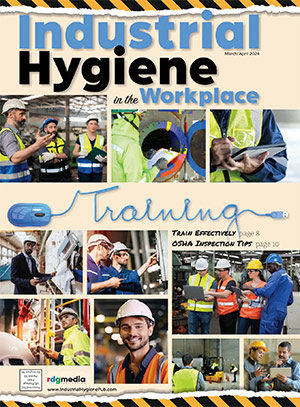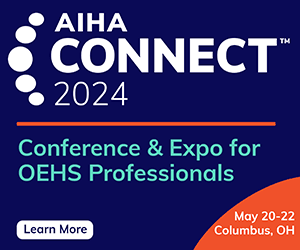Industrial Maintenance for Workplace Safety
In modern times, industries heavily rely on machines for their operations. Therefore, the significance of industrial maintenance cannot be overlooked. It plays a crucial role in ensuring that these machines function effectively for an extended period of time, performing the tasks they were designed for.
What Is Industrial Maintenance?
Industrial maintenance involves a variety of cleaning activities, including regular upkeep, preventative measures, and emergency cleaning of equipment and workspaces in industrial or manufacturing environments. Industrial or manufacturing maintenance management personnel are responsible for ensuring that equipment is operating efficiently and safely, which contributes to a safe work environment for all staff.
Although on-site maintenance personnel handle most tasks, there may be instances where outside assistance is required. For example, if waste is generated during a maintenance project, an industrial maintenance contractor may be needed to manage and dispose of it properly.
What is the Role of Maintenance?
In today’s business landscape, the importance of maintenance in the overall productivity and success of companies cannot be overstated. Maintenance activities are no longer solely focused on reactive equipment repairs (corrective maintenance), but also on anticipating and preventing potential breakdowns and malfunctions (preventive maintenance). With the help of new technologies, such as electronic sensors and advanced facilities management software, it is now possible to predict equipment failures and perform timely interventions (predictive maintenance).
The primary goal of maintenance is to maintain safe working conditions for production tools while minimizing production costs. As a result, it has become a key driver of optimization and profitability for businesses facing ever-increasing economic challenges.
Given this expanded role, maintenance departments must take a holistic approach to their work, tackling complex structural projects that require consideration of multiple factors, such as cost, deadlines, quality, safety, and environmental impact. This demands a high degree of expertise and collaboration from both managers and technicians.
What are the Different Types of Industrial Maintenance?
1. Corrective
The term “corrective maintenance” refers to the actions taken to address equipment or machine failures or breakdowns. Corrective maintenance can be categorized as either palliative or curative.
Palliative corrective maintenance involves a temporary solution that enables the equipment to continue functioning partially or fully as needed. This approach is intended to address the immediate problem without fully repairing the equipment.
Curative corrective maintenance, on the other hand, involves permanent repairs that restore the equipment to its original or optimal operating condition. This type of maintenance is focused on fixing the problem and ensuring that the equipment is functioning as it should.
2. Preventive
Preventive maintenance refers to the actions taken to proactively address equipment or machine issues before they result in breakdowns or failures. There are three subtypes of preventive maintenance:
- Systematic preventive maintenance involves performing routine checks and maintenance on equipment at regular intervals, regardless of the current condition of the equipment.
- Condition-based maintenance involves performing maintenance tasks based on the current condition of the equipment, as determined by advanced sensors or other diagnostic tools.
- Predictive maintenance involves the use of advanced technologies, such as artificial intelligence and machine learning algorithms, to predict potential failures before they occur, allowing for timely intervention and maintenance.
Incorporating preventive maintenance into an equipment maintenance program can help reduce unexpected downtime, extend the lifespan of equipment, and improve overall productivity and efficiency.
Why do You Need Industrial Maintenance?
1. Security
Industrial maintenance is a critical component of ensuring the safety of all individuals involved in the production process. Through this practice, the proper functioning of industrial equipment is promoted, reducing the likelihood of accidents or incidents that can put workers at risk.
By implementing maintenance protocols, risks to workers can be assessed, detected, controlled, and prevented, creating a safe working environment. As a result, the probability of disruptions to productivity is significantly reduced.
Overall, industrial maintenance plays a vital role in promoting worker safety and ensuring that equipment is functioning properly, which can lead to increased productivity and efficiency.
2. Quality
Industrial maintenance interventions serve the dual purpose of ensuring the quality of the final product as well as optimizing the entire production process. Regular maintenance of equipment increases their efficiency and ensures they function at their best capacity. Consequently, the likelihood of defects in the final product is significantly minimized.
3. Costs
Regular maintenance is vital for ensuring maximum productivity and profitability in any business. By minimizing the chances of equipment failure and production stoppage, maintenance activities can safeguard the bottom line of your enterprise. Moreover, when anomalies are prevented, the expenses associated with costly repairs can be avoided, thus saving more money than the cost of maintenance itself.
Smooth, uninterrupted production not only ensures higher profits but also eliminates the need for purchasing new machinery. The overall cost reduction achieved by implementing regular maintenance is a boon for any business looking to streamline operations and maximize profits.
4. Availability
Investing in industrial maintenance is a strategic move that ensures the uninterrupted availability of vital equipment. In order for a company to remain profitable, minimizing production failures and reducing equipment downtime is crucial. Maintenance activities are therefore an essential component of any successful business strategy.
Through careful planning and execution of maintenance interventions, significant reductions in production volume can be avoided. Additionally, regular maintenance ensures that equipment is always in optimal working condition, increasing its useful lifespan and minimizing the need for expensive replacements. Ultimately, investing in industrial maintenance is a smart and effective way to ensure the long-term success of your business.
Five Safety Precautions You Should Take While Running Maintenance
Preventive maintenance aims to avoid safety risks and equipment malfunctions. A well-maintained facility provides a much safer environment for employees, tenants and visitors. However, some maintenance procedures involve inherent risks that you should never expose your employees to.
You still need to invest in proper staff training to perform minor maintenance repairs and in safety training on how to use the equipment on site. Here’s what you should keep in mind when working on your plant equipment:
Don’t perform maintenance tasks on the work equipment unless you know it’s safe.
If you want to maintain equipment or equipment, always turn it off before calling maintenance personnel. Equipment, such as conveyors and heavy machinery, should never be active while maintenance personnel are working on them. This can result in serious injuries, especially if maintenance personnel are unaware that the system is being used. When you make a service request, make sure that the device is no longer in operation.
Use the right safety equipment.
Different maintenance tasks entail different safety risks. For this reason, employees need to be equipped with safety clothing and protective clothing to maintain their equipment. It can be a big help if you provide your maintenance team or employees with eyeglasses, masks or special clothing when they need to work on plant equipment.
Do not allow employees to go near maintenance areas.
Employees should not be present during maintenance unless specifically requested by maintenance personnel. The employee or manager who reported the problem may be able to provide important information to maintenance personnel, but should not be around while potentially hazardous maintenance is being carried out.
Find out where your emergency first aid kit is.
Although employees are very diligent when it comes to performing maintenance, some accidents cannot be prevented. In case of an emergency, the center administrator should know where your first aid kit is. Long-term injuries can be minimized if treated right away, even if it’s a basic treatment, such as applying gauze to stop bleeding.
Have a no-tolerance policy.
Don’t let employees “waste time” in the office or other places where heavy machinery is being used. Keep your staff with these simple changes to the management and maintenance protocol of your facilities.
About the Author
Lindsey Walker is the Marketing Manager for NEXGEN, a Sacramento-based industry leader in designing advanced computerized maintenance management systems and asset management software tools for utilities, facilities, public works, manufacturing and fleet industries.
Share on Socials!
OSHA issues guidance to ensure uniform enforcement of silica standards
Dräger increases N95 respiratory mask production with new US facility
Airgas Launches New Company Theme Line, “Fill Your Potential.™”
Leaders in Industrial Hygiene
Council for Accreditation in Occupational Hearing Conservation (CAOHC)
Subscribe!
Sign up to receive our industry publications for FREE!









